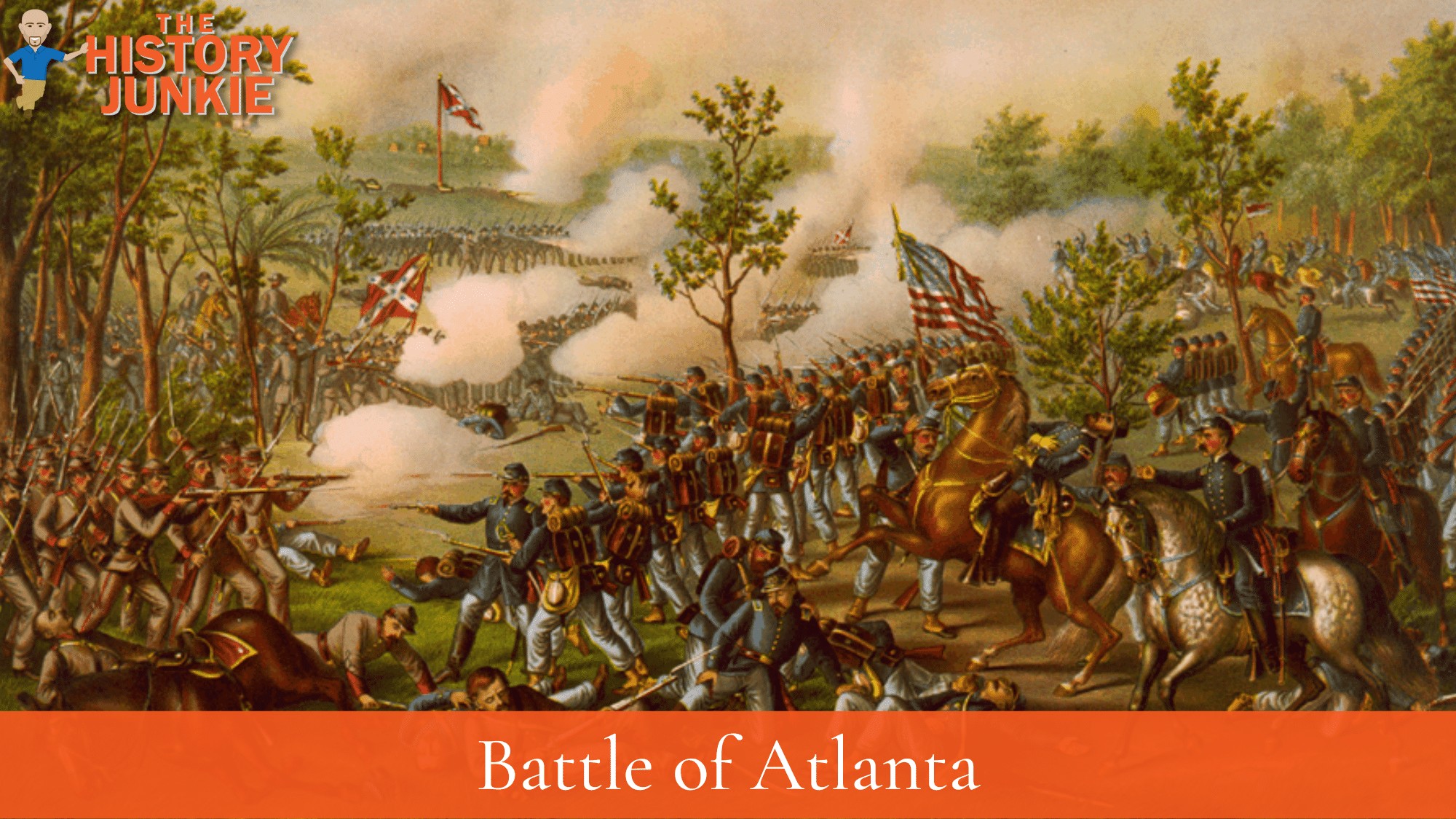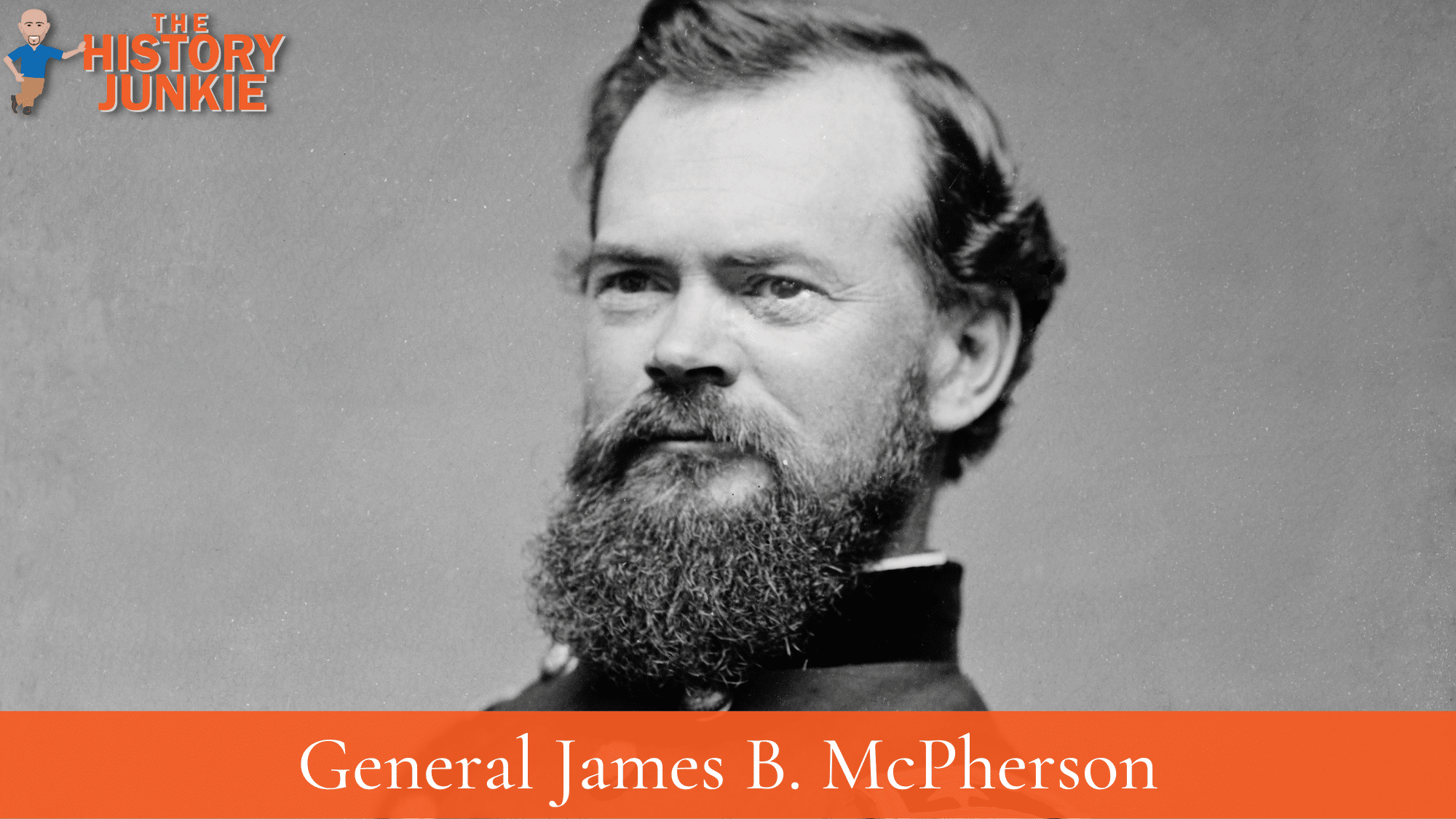The Battle of Atlanta was a major battle in the Atlanta Campaign of the Civil War. It was fought on July 22, 1864, just southeast of Atlanta, Georgia.

The Union Army, commanded by William Sherman, overwhelmed and defeated the Confederate Army, commanded by John Bell Hood. Union Major General James B. McPherson was killed in the battle, the second-highest-ranking Union officer killed in action during the war.
Jump to:
The battle was a major victory for the Union, and it boosted Northern morale. It also had a significant impact on the 1864 presidential election.
In the election, former Union general George B. McClellan, a Democrat, ran against President Abraham Lincoln. McClellan was running on a peace platform, calling for an armistice with the Confederacy.
The capture of Atlanta and Hood's burning of military facilities as he evacuated the city was extensively covered by Northern newspapers. This boosted Northern morale and helped Lincoln win the election by a significant margin.
Read Article: Famous Civil War Generals
The Battle

Hood ordered a three-pronged attack on the Union forces at Atlanta. Hardee's corps was to march around the Union left flank, Wheeler's cavalry was to march near Sherman's supply line, and Cheatham's corps was to attack the Union front.
Hardee's men took longer than expected to get into position, giving McPherson time to send XVI Corps to strengthen his left flank.
The initial Confederate attack was repulsed, but the Union left flank began to retreat.
McPherson rode to the front to observe the battle and was shot and killed by Confederate infantry. Confederate Major General William H.T. Walker was also killed - shot from his horse by a Union picket.
Near Decatur, Brigadier General John W. Sprague and his brigade were attacked by Wheeler's cavalry while Hardee's column took the Flat Shoals Road toward McPherson's position.
The main lines of battle formed an L-shape, with Hardee's attack forming the lower part of the L and Cheatham's attack on the Union front forming the vertical part. Hood intended to attack the Union troops from both east and west. The fighting centered on Bald Hill, east of the city.
The Federals had arrived two days earlier and begun shelling the city, killing several civilians. A savage struggle, sometimes hand-to-hand, developed around the hill, lasting until just after dark.
The Federals held the hill while the Confederates retreated to a point just south.
Meanwhile, two miles to the north, Cheatham's troops had broken through the Union lines at the Georgia railroad. In response, twenty artillery pieces were positioned near Sherman's headquarters at Copen Hill and shelled the Confederates.
Logan's XV Corps regrouped and repulsed the Southern troops.
Aftermath
The Union suffered over 3,700 casualties, including the death of Major General McPherson. The Confederates lost 5,500 men, a heavy blow to their already depleted army. However, the Confederates still held the city.
Despite the losses, the Union continued to press their advantage in manpower, which forced the Confederate Army to continue their retreat.
